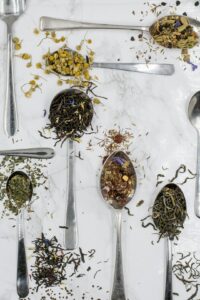Support our educational content for free when you purchase through links on our site. Learn more
[2023] How to Grow Tea Indoors: A Comprehensive Guide
Table of Contents
- Quick Answer
- Quick Tips and Facts
- Choosing the Right Tea Plant
- Creating the Ideal Growing Conditions
- Caring for Your Tea Plant
- Harvesting and Processing
- FAQ
- Conclusion
- Recommended Links
- Reference Links
Quick Answer
Can you grow tea indoors? Yes, you can successfully grow tea indoors, allowing you to enjoy your own homegrown tea leaves. With the right tea plant, proper care, and ideal growing conditions, you can have a thriving tea plant right in your own home.
Quick Tips and Facts
- Tea plants (Camellia sinensis) can be grown indoors with the right care and conditions.
- Indoor tea plants typically reach a height of 3-5 feet.
- Tea plants can produce leaves for up to 100 years.
- The ideal temperature range for indoor tea plants is 65-85°F (18-29°C).
- Tea plants require high humidity levels, ideally around 60-70%.
- Pruning is essential to maintain the shape and size of your tea plant.
- Tea leaves can be harvested and processed to make various types of tea, including green, black, oolong, and white tea.
Choosing the Right Tea Plant
When growing tea indoors, it's important to choose the right tea plant variety. Here are some popular tea plant varieties that are suitable for indoor cultivation:
-
Camellia sinensis var. sinensis: This variety is commonly known as Chinese tea and is ideal for indoor growing. It produces high-quality tea leaves and is more cold-hardy compared to other varieties.
-
Camellia sinensis var. assamica: This variety is native to the Assam region of India and is known for its robust flavor. It can also be grown indoors, but it requires slightly warmer temperatures.
-
Camellia sinensis var. cambodiensis: This variety is native to Cambodia and is suitable for indoor cultivation. It has a unique flavor profile and can add diversity to your tea collection.
Creating the Ideal Growing Conditions
To ensure the success of your indoor tea plant, it's crucial to provide the ideal growing conditions. Pay attention to the following factors:
Watering
- Tea plants prefer consistently moist soil. Water your plant when the top inch of soil feels dry to the touch.
- Use room temperature water to avoid shocking the roots.
- Avoid overwatering, as it can lead to root rot. Ensure proper drainage to prevent waterlogged soil.
Sunlight
- Tea plants require bright, indirect sunlight for at least 4-6 hours a day.
- Place your tea plant near a south-facing window or use grow lights to supplement natural light.
- Rotate the plant occasionally to ensure even growth.
Fertilizer
- Use a balanced, water-soluble fertilizer specifically formulated for acid-loving plants.
- Apply the fertilizer according to the package instructions, typically every 4-6 weeks during the growing season.
- Avoid over-fertilization, as it can damage the plant.
Soil
- Use well-draining, acidic soil with a pH level between 4.5 and 6.0.
- A mix of peat moss, perlite, and compost works well for tea plants.
- Avoid heavy clay or alkaline soils, as they can negatively affect the plant's health.
Temperature
- Tea plants thrive in temperatures between 65-85°F (18-29°C).
- Avoid exposing your tea plant to extreme temperature fluctuations.
- Maintain a consistent temperature and protect the plant from drafts.
Caring for Your Tea Plant
Proper care is essential for the health and longevity of your indoor tea plant. Here are some key aspects to consider:
Pruning
- Regular pruning helps maintain the shape and size of your tea plant.
- Prune in early spring before new growth begins.
- Remove any dead, damaged, or overcrowded branches.
- Pruning also promotes airflow and reduces the risk of pests and diseases.
Pests and Diseases
- Common pests that can affect tea plants include aphids, spider mites, and scale insects.
- Monitor your plant regularly and take action at the first sign of infestation.
- Use organic pest control methods or insecticidal soap to treat infestations.
- Proper watering and good airflow can help prevent fungal diseases.
Harvesting and Processing
Once your tea plant is mature enough, you can start harvesting and processing your own tea leaves. Here's a general guide:
- Harvesting: Pluck the young, tender leaves and buds from the tea plant. The top two leaves and the bud are considered the best for tea production.
- Withering: Spread the plucked leaves in a single layer and let them wither for several hours. This helps reduce moisture content.
- Rolling: Gently roll the withered leaves to release the enzymes and initiate oxidation. This step varies depending on the type of tea you want to make.
- Oxidation: Allow the rolled leaves to oxidize for a specific duration, depending on the desired tea type. Green tea is minimally oxidized, while black tea is fully oxidized.
- Drying: Finally, dry the oxidized leaves to stop the oxidation process. This can be done using a dehydrator, oven, or by air-drying.
FAQ
Can you grow tea tree indoors?
Yes, tea trees can be grown indoors. However, it's important to choose the right tea plant variety and provide the ideal growing conditions, including proper lighting, watering, and temperature.
How long does tea take to grow?
Tea plants typically take 3-5 years to mature and start producing leaves suitable for harvesting. However, you can still enjoy the process of growing and caring for your tea plant during this time.
How do you care for a tea plant indoors?
To care for a tea plant indoors, provide it with bright, indirect sunlight, water it consistently, use well-draining acidic soil, and maintain a suitable temperature range. Pruning and monitoring for pests and diseases are also important aspects of care.
Can you grow tea in the US?
Yes, tea can be grown in certain regions of the United States, such as the Southeast, where the climate is suitable for tea cultivation. However, growing tea indoors allows you to bypass climate limitations and enjoy fresh tea leaves regardless of your location.
Conclusion
Growing tea indoors is a rewarding and enjoyable experience. With the right tea plant variety, proper care, and ideal growing conditions, you can have a thriving tea plant right in your own home. Remember to choose the right tea plant variety, provide adequate lighting, water consistently, use suitable soil, and maintain a suitable temperature range. With patience and dedication, you can enjoy the satisfaction of harvesting and processing your own homegrown tea leaves.
Recommended Links
- Shop Tea Plants on Amazon
- Shop Tea Plants on Walmart
- Shop Tea Plants on Etsy
Books:
Visit Growing Teas™ for more tea-growing resources and information.
Reference Links
- Camellia sinensis – Wikipedia
- Growing Tea Plants – Gardening Know How
- Tea Plant Care Guide – The Spruce
- How to Grow Tea at Home – The Spruce







